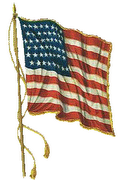The Unbearable Chic-ness of Jihad
Not so long ago, the only place in Tehran that I might spy a pair of Dolce and Gabbana heels would have been in a smuggled copy of Vogue. These days, I need only walk through my neighborhood. High above a busy intersection where hard-liners hang "Death to America" banners looms a huge D&G billboard featuring a pair of pointy alligator-skin heels and a rather exquisite espresso-colored handbag. The Italian label is not the first to entice my neighbors with the promise of designer brand status: Last winter, an Escada billboard appeared over the local square, advertising "casual luxury look" accessories. As if none of this were enough, two weeks ago Iran's first full-scale Western boutique opened for business nearby. The first day, as they hung up the Benetton sign and filled the windows with satin flip-flops and beach totes, I stood outside gawking, wondering what the Afghan day laborers waiting on the corner thought of the giant posters of blonde women in effusive motion. Overnight, the women in the poster had the tops of their heads chopped off (no veil), but their frozen smiles still beckon shoppers inside to buy $40 fuschia mini-skirts for girls under six.
All of this might make sense in parts of the city inhabited by Westernized, nouveau riche Iranians whose love of conspicuous consumption makes their streets the appropriate place to advertise Louis Vuitton luggage. But my neighborhood is dominated by religious families whose women wear black chador, and on days commemorating the death of Shi'a saints the streets are draped in black. These conservative families are well established in business or the bureaucracy and have plenty of money, but prefer not to flaunt it. In my parents' day, wealthy bazaaris (merchants) were known for living modestly — eating basic Iranian fare seated on the floor of simply decorated homes — regardless of the size of their bank accounts. And for families connected to a system that proclaims a revolutionary ideology of championing the dispossessed and defying the West, flaunting financial status by way of European fashion labels is no less awkward.
But if the patriarchs and matriarchs of the prosperous families of my neighborhood are circumspect in their consumption habits, I suspect that their children, now in their 20s and 30s, feel differently. Most of the gleaming new BMW SUVs creeping through traffic are driven by women in black chador — they may hide their hair, but allowing a Burberry scarf to peak out beneath the full-length black covering has become one of the most copied trends of the past year. Even a devout, high-ranking bureaucrat I occasionally meet has taken to twirling a Montblanc pen during conversation, as if to underscore his influence.
The emergence of a privileged class of religious conservatives discovering the lure of conspicuous consumption must count as one of the Islamic Republic's strangest achievements. Still, their materialism appears to be infectious. Whether it's the middle-class school teacher vying for a holiday in Thailand, the twentysomething taxi drivers coveting the latest Nokia mobile phone, or the chador-clad housewives with their BMWs, Iranian society is caught up in the quest for affluence, and in its display. Perhaps that's why the only real crisis of President Mahmoud Ahmadinejad's tenure — the moment when discontent became palpable and Iranians voted against his allies in local elections — came last winter, when inflation caused a 40% jump in housing prices and in the cost of basic commodities like tomatoes soared.
...
Pertinent Links:
1) The Unbearable Chic-ness of Jihad
Thursday, April 12, 2007
Subscribe to:
Post Comments (Atom)




No comments:
Post a Comment